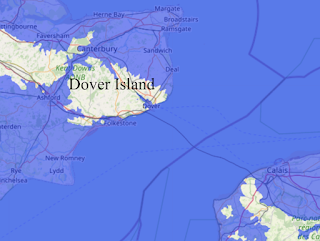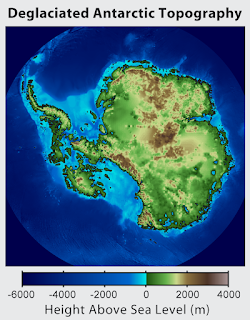Hairless Wolves
The absence of humans from the world leaves open our former niche of persistence hunter, which was filled by various groups of humans throughout history including the Tarahumara, basically, running after a wild animal such as a deer until it collapses from exhaustion, although this selection began only ~2mya. With humans gone this niche will be filled. In other places and climates are filled by wolves, dingoes, and african wild dogs. These creatures already have certain adaptations useful to this, and, as such, are uniquely poised to take up this niches when we are gone.
Some of humans' adaptations to this is our upright posture, making locamotion more efficiant and ability to sweat, granted by our lack of fur, allowing us to avoid overheating when people run long distances. Of these, gradual loss of fur would be advantageous every step of the way, whereas the intermediate stages of centaurism would not grant quite as much of a benefit, so that would be much less likely to evolve.
Wolves
Wolves are listed as "least concern" unde the IUCN redlist, which means they are very unlikely to go extinct. They will migrate south into the southern USA taking up predatory niches. These will include persistence predatory niches. It will likely be a slower trickle of canadian wolves, gradually adapting for a niche of a persistence predator. On hot steppes, sweating will be benefital
As a result, these wolves may adapt to their niche by losing fur and adapting various pores in their body to sweat. This would allow them to run other animals, particularly deer, which have become very abundant, to exhaustion. Warm arid steppes would be very conducive to this sort of thing. According to Beck, H.E., McVicar, T.R., Vergopolan, N. et al the area of Texas and Oklahoma will see an expansion in the arid steppe. This region will be home to a subspecies of wolf adapted specially to endurance predation.
Initially, it will just be a warmer climate adapted version of wolves that exist now, which I will call Canis lupus longicursor. By the time it undergoes a complete loss of hair, the wolf's descendents will be enouugh to comprise their own genus, composed of various species, divided by continent. This genus will be called Lycos, and the form native to the new world will be Lycos (Hesperus), and this species Lycos sudorifer glabus.
Selected references: https://www.delta-optimist.com/weatherhood-bc/new-maps-show-how-climate-change-might-reshape-our-planets-biomes-7728504
https://www.nature.com/articles/s41597-023-02549-6?utm_source=delta%20optimist&utm_campaign=delta%20optimist%3A%20outbound&utm_medium=referral


Comments
Post a Comment